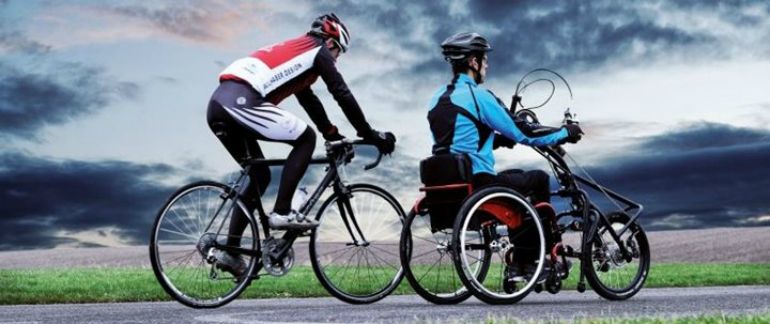Share:
Take it offline!
This Education in Motion resource is also available as a printable PDF.
Download PDF
Sport favours the rehabilitation, normalisation and integration of people with disabilities, as well as being a complement to an active life and a positive element in establishing a truly accessible society.
But achieving this unity between sports and disability is not always easy. Adapted sports require the support of many people (supervisors, health professionals, other athletes, psychologists, therapists, etc.) to create sound infrastructures, and that is why it is so important to be aware of the benefits of pairing sports with disability.

Sports and disability: a relationship that comes from afar
To establish an origin of the relationship between sports and disability, we must go back to the end of World War II and to Stoke Mandeville Hospital (England) where Sir Ludwig Guttmann founded a centre for patients with spinal cord injuries. In this centre, he introduced sport, assuring that it was beneficial for his patients “to first train the body and second, to avoid boredom of hospital life”.
Guttmann was also convinced that his practice favoured the self-discipline, companionship, and self-esteem of his patients; three essential values for the social reintegration of people who had suffered from spinal cord injuries and amputations.
Having proven the benefits of the relationship between sports and disability, his practice was extended from the 1960s and 70s thanks to the regulation of some adapted sports and the creation of organisations and federations at international, national, regional and local level, focused on people with different types of disabilities, among which were:
- ISOD (International Sports Organisation for the Disabled) created in 1964;
- ISMWF (for people in wheelchairs, now IWASF);
- IBSA (for the visually impaired);
- CP-ISRA (for persons with cerebral palsy);
- INAS-FMH (for the mentally disabled, now INAS-FID).
As you can see, what began as a rehabilitation treatment for people with disabilities ended up becoming the worldwide athletic movement that we know today.

In physical, psychological and "social" shape: an almost perfect combination
Sports and disability together are a key partnership for disabled people to lead an active life, for various reasons. The first one is that sports can facilitate rehabilitation and serve as a therapy for people with a physical (motor), intellectual (psychological) or mixed (psychomotor) disability to regain mobility or improve it.
Taking part in sports also serves as a counterpart to initial rehabilitation, it’s the epicentre of long-term stimulation, as well as the development of self-esteem. This is what the relationship between sports and disability refers to, from a therapeutic point of view.
In terms of personal development, a person with disabilities needs the same components as someone who isn’t, and that is why leisure and social relationships occupy a large part of their day-to-day life. In this sense, the link established between sports and disability is very important because the practice of them can help the disabled person to establish new relationships outside the family and medical-related environment, without forgetting that sport can also be included within.
Playing sports has always been a healthy and fundamental hobby. It helps to get rid of toxins, expend energy and stay agile, and is also a good way to eliminate stress and help relax the mind. In the case of people suffering some kind of disability, it implies a reinforcement of social inclusion, so it can be considered doubly necessary.
If a person plays a sport in a fun or recreational way, it can encourage integration and reconcile the relaxation of family and caregivers. If sports are played competitively, other very important factors such as self-improvement come into play. As with non-disabled people, the achievements and progress made during the practice of a sport at the highest level increase personal autonomy and help overall personal development. In the case of disabled people, all these aspects can be read as the relationship between sports and disability being, above all, synonymous with normalisation.

Of course, before practicing any sport, you should consult a doctor or physiotherapist to determine if it’s compatible with the person’s disability. If you want to practice it recreationally, in places such as community centres, sports centres or schools, clinics and hospitals can advise you and give you information, while if you are looking to take part in competitive sport, the following professionals and teams can help you:
- CPISRA (Federation of Sports and Recreation for People with Cerebral Palsy)
- IBSA (Federation of Sports for the Blind)
- ISMWSF (International Federation of Wheelchair Sports)
- INAS-FID (Federation of Sports for People with Intellectual Disabilities)
Due to more and more people playing more adapted sports and the professionalization of them, it has become very important to have wheelchair sports adapted to the requirements of each discipline.
That's why at Sunrise Medical we offer a range of wheelchairs for demanding athletes, where you will find specific chairs for playing adapted tennis, wheelchair basketball or hand biking. Visit our website to see the full range.